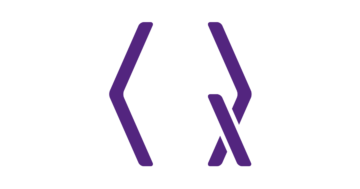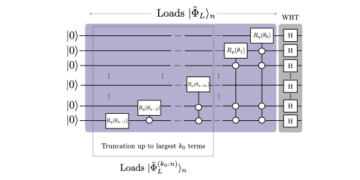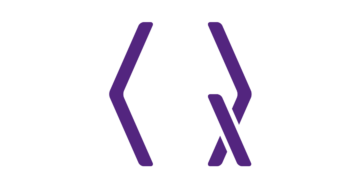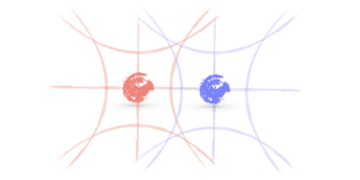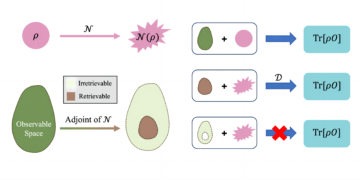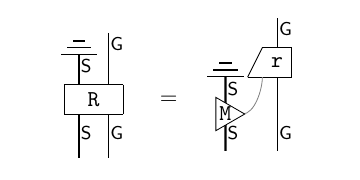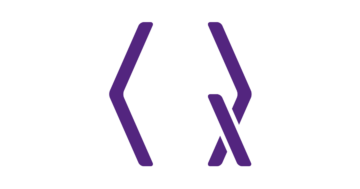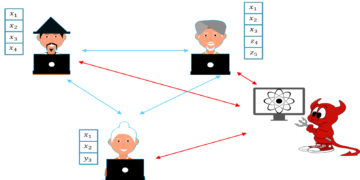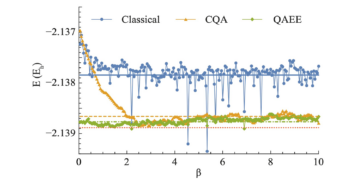1Quantum Artificial Intelligence Laboratory (QuAIL), NASA Ames Research Center, Moffett Field, CA
2USRA Research Institute for Advanced Computer Science (RIACS), Mountain View, CA
3Berkeley Center for Quantum Information and Computation, University of California, Berkeley, CA
4Department of Computer Science, University of Chicago, Chicago, IL
Find this paper interesting or want to discuss? Scite or leave a comment on SciRate.
Abstract
We consider the power of local algorithms for approximately solving Max $k$XOR, a generalization of two constraint satisfaction problems previously studied with classical and quantum algorithms (MaxCut and Max E3LIN2). In Max $k$XOR each constraint is the XOR of exactly $k$ variables and a parity bit. On instances with either random signs (parities) or no overlapping clauses and $D+1$ clauses per variable, we calculate the expected satisfying fraction of the depth-1 QAOA from Farhi et al [arXiv:1411.4028] and compare with a generalization of the local threshold algorithm from Hirvonen et al [arXiv:1402.2543]. Notably, the quantum algorithm outperforms the threshold algorithm for $k$$gt$$4$.
On the other hand, we highlight potential difficulties for the QAOA to achieve computational quantum advantage on this problem. We first compute a tight upper bound on the maximum satisfying fraction of nearly all large random regular Max $k$XOR instances by numerically calculating the ground state energy density $P(k)$ of a mean-field $k$-spin glass [arXiv:1606.02365]. The upper bound grows with $k$ much faster than the performance of both one-local algorithms. We also identify a new obstruction result for low-depth quantum circuits (including the QAOA) when $k=3$, generalizing a result of Bravyi et al [arXiv:1910.08980] when $k=2$. We conjecture that a similar obstruction exists for all $k$.
Featured image: Comparison of the satisfying fraction (performance) of the threshold algorithm and the depth-1 QAOA for Max kXOR at large $D$ (and $D gg k$). The constant $C_k$ for QAOA grows more quickly with $k$ than for the threshold algorithm. Although the threshold algorithm outperforms the depth-1 QAOA for $k in {2,3,4}$, at all other k, the QAOA is the better algorithm.
[embedded content]
► BibTeX data
► References
[1] A. Auffinger and W.-K. Chen. On properties of Parisi measures. arXiv:1303.3573, doi:10.1007/s00440-014-0563-y.
https://doi.org/10.1007/s00440-014-0563-y
arXiv:1303.3573
[2] A. Auffinger and W.-K. Chen. The Parisi formula has a unique minimizer. Communications in Mathematical Physics, 335(3):1429–1444, Nov 2014. arXiv:1402.5132, doi:10.1007/s00220-014-2254-z.
https://doi.org/10.1007/s00220-014-2254-z
arXiv:1402.5132
[3] A. Auffinger and W.-K. Chen. Parisi formula for the ground state energy in the mixed p-spin model. arXiv:1606.05335, doi:10.1214/16-aop1173.
https://doi.org/10.1214/16-aop1173
arXiv:1606.05335
[4] A. E. Alaoui and A. Montanari. Algorithmic thresholds in mean field spin glasses. arXiv:2009.11481.
arXiv:2009.11481
[5] A. E. Alaoui, A. Montanari, and M. Sellke. Optimization of mean-field spin glasses. arXiv:2001.00904, doi:10.1214/21-aop1519.
https://doi.org/10.1214/21-aop1519
arXiv:2001.00904
[6] S. Bravyi, A. Kliesch, R. Koenig, and E. Tang. Obstacles to state preparation and variational optimization from symmetry protection. arXiv preprint, 2019. arXiv:1910.08980.
https://doi.org/10.1103/PhysRevLett.125.260505
arXiv:1910.08980
[7] B. Barak and K. Marwaha. Classical algorithms and quantum limitations for maximum cut on high-girth graphs. arXiv:2106.05900, doi:10.4230/LIPIcs.ITCS.2022.14.
https://doi.org/10.4230/LIPIcs.ITCS.2022.14
arXiv:2106.05900
[8] B. Barak, A. Moitra, R. O’Donnell, et al. Beating the random assignment on constraint satisfaction problems of bounded degree. arXiv:1505.03424.
arXiv:1505.03424
[9] W.-K. Chen, D. Gamarnik, D. Panchenko, and M. Rahman. Suboptimality of local algorithms for a class of max-cut problems. The Annals of Probability, 47(3), May 2019. arXiv:1707.05386, doi:10.1214/18-aop1291.
https://doi.org/10.1214/18-aop1291
arXiv:1707.05386
[10] C.-N. Chou, P. J. Love, J. S. Sandhu, and J. Shi. Limitations of Local Quantum Algorithms on Random Max-k-XOR and Beyond. arXiv:2108.06049.
arXiv:2108.06049
[11] A. Crisanti and T. Rizzo. Analysis of the $infty$-replica symmetry breaking solution of the Sherrington-Kirkpatrick model. Physical Review E, 65(4), Apr 2002. arXiv:cond-mat/0111037, doi:10.1103/physreve.65.046137.
https://doi.org/10.1103/physreve.65.046137
arXiv:cond-mat/0111037
[12] B. Derrida. Random-energy model: An exactly solvable model of disordered systems. Phys. Rev. B, 24:2613–2626, Sep 1981. doi:10.1103/PhysRevB.24.2613.
https://doi.org/10.1103/PhysRevB.24.2613
[13] A. Dembo, A. Montanari, and S. Sen. Extremal cuts of sparse random graphs. The Annals of Probability, 45(2):1190–1217, 2017. arXiv:1503.03923, doi:10.1214/15-aop1084.
https://doi.org/10.1214/15-aop1084
arXiv:1503.03923
[14] L. Eldar and A. W. Harrow. Local Hamiltonians whose ground states are hard to approximate. 2017 IEEE 58th Annual Symposium on Foundations of Computer Science (FOCS), Oct 2017. arXiv:1510.02082, doi:10.1109/focs.2017.46.
https://doi.org/10.1109/focs.2017.46
arXiv:1510.02082
[15] E. Farhi, J. Goldstone, and S. Gutmann. A quantum approximate optimization algorithm. arXiv:1411.4028.
arXiv:1411.4028
[16] E. Farhi, J. Goldstone, and S. Gutmann. A quantum approximate optimization algorithm applied to a bounded occurrence constraint problem. arXiv:1412.6062.
arXiv:1412.6062
[17] E. Farhi, D. Gamarnik, and S. Gutmann. The quantum approximate optimization algorithm needs to see the whole graph: A typical case. arXiv:2004.09002.
arXiv:2004.09002
[18] J. Friedman. A proof of Alon’s second eigenvalue conjecture and related problems. arXiv:cs/0405020, doi:10.1090/memo/0910.
https://doi.org/10.1090/memo/0910
arXiv:cs/0405020
[19] S. Hadfield. Quantum Algorithms for Scientific Computing and Approximate Optimization. Columbia University, 2018, arXiv:1805.03265.
arXiv:1805.03265
[20] J. Håstad. Some optimal inapproximability results. Journal of the ACM (JACM), 48(4):798–859, 2001. doi:10.1145/258533.258536, URL http://www.cs.umd.edu/ gasarch/BLOGPAPERS/max3satl.pdf.
https://doi.org/10.1145/258533.258536
http://www.cs.umd.edu/~gasarch/BLOGPAPERS/max3satl.pdf
[21] M. B. Hastings. Trivial low energy states for commuting Hamiltonians, and the quantum PCP conjecture. Quantum Information & Computation, 13, 2013. arXiv:1201.3387, doi:10.26421/qic13.5-6-3.
https://doi.org/10.26421/qic13.5-6-3
arXiv:1201.3387
[22] M. B. Hastings. Classical and quantum bounded depth approximation algorithms. arXiv:1905.07047, doi:10.26421/qic19.13-14-3.
https://doi.org/10.26421/qic19.13-14-3
arXiv:1905.07047
[23] W. W. Ho and T. H. Hsieh. Efficient variational simulation of non-trivial quantum states. arXiv:1803.00026, doi:10.21468/scipostphys.6.3.029.
https://doi.org/10.21468/scipostphys.6.3.029
arXiv:1803.00026
[24] J. Hirvonen, J. Rybicki, S. Schmid, and J. Suomela. Large cuts with local algorithms on triangle-free graphs. The Electronic Journal of Combinatorics, pages P4–21, 2017. arXiv:1402.2543, doi:10.37236/6862.
https://doi.org/10.37236/6862
arXiv:1402.2543
[25] C. Y.-Y. Lin and Y. Zhu. Performance of QAOA on typical instances of constraint satisfaction problems with bounded degree. arXiv:1601.01744.
arXiv:1601.01744
[26] K. Marwaha. Local classical MAX-CUT algorithm outperforms $p=2$ QAOA on high-girth regular graphs. Quantum, 5:437, Apr. 2021. arXiv:2101.05513, doi:10.22331/q-2021-04-20-437.
https://doi.org/10.22331/q-2021-04-20-437
arXiv:2101.05513
[27] A. Montanari. Optimization of the Sherrington–Kirkpatrick Hamiltonian. arXiv:1812.10897, doi:10.1109/focs.2019.00087.
https://doi.org/10.1109/focs.2019.00087
arXiv:1812.10897
[28] P. Obszarski and A. Jastrzȩbski. Edge-coloring of 3-uniform hypergraphs. Discrete Applied Mathematics, 217:48–52, 2017, Combinatorial Optimization: Theory, Computation, and Applications. doi:10.1016/j.dam.2016.06.009.
https://doi.org/10.1016/j.dam.2016.06.009
[29] D. Panchenko. Introduction to the SK model. arXiv:1412.0170, doi:10.4310/cdm.2014.v2014.n1.a4.
https://doi.org/10.4310/cdm.2014.v2014.n1.a4
arXiv:1412.0170
[30] D. Panchenko. On the $k$-sat model with large number of clauses. arXiv:1608.06256, doi:10.1002/rsa.20748.
https://doi.org/10.1002/rsa.20748
arXiv:1608.06256
[31] G. Parisi. A sequence of approximated solutions to the S-K model for spin glasses. Journal of Physics A: Mathematical and General, 13(4):L115–L121, apr 1980. doi:10.1088/0305-4470/13/4/009.
https://doi.org/10.1088/0305-4470/13/4/009
[32] S. Sen. Optimization on sparse random hypergraphs and spin glasses. arXiv:1606.02365, doi:10.1002/rsa.20774.
https://doi.org/10.1002/rsa.20774
arXiv:1606.02365
[33] R. Shaydulin, S. Hadfield, T. Hogg, and I. Safro. Classical symmetries and the quantum approximate optimization algorithm. Quantum Information Processing, 20(11):1–28, 2021. arXiv:2012.04713, doi:10.1007/s11128-021-03298-4.
https://doi.org/10.1007/s11128-021-03298-4
arXiv:2012.04713
[34] M. Talagrand. The Parisi formula. Annals of Mathematics, 163:221–263, 2006. doi:10.4007/annals.2006.163.221, URL https://annals.math.princeton.edu/wp-content/uploads/annals-v163-n1-p04.pdf.
https://doi.org/10.4007/annals.2006.163.221
https://annals.math.princeton.edu/wp-content/uploads/annals-v163-n1-p04.pdf
[35] Z. Wang, S. Hadfield, Z. Jiang, and E. G. Rieffel. Quantum approximate optimization algorithm for maxcut: A fermionic view. Phys. Rev. A, 97:022304, Feb 2018. arXiv:1706.02998, doi:10.1103/PhysRevA.97.022304.
https://doi.org/10.1103/PhysRevA.97.022304
arXiv:1706.02998
Cited by
[1] Joao Basso, Edward Farhi, Kunal Marwaha, Benjamin Villalonga, and Leo Zhou, “The Quantum Approximate Optimization Algorithm at High Depth for MaxCut on Large-Girth Regular Graphs and the Sherrington-Kirkpatrick Model”, arXiv:2110.14206.
[2] Nicolas PD Sawaya, Albert T Schmitz, and Stuart Hadfield, “Encoding trade-offs and design toolkits in quantum algorithms for discrete optimization: coloring, routing, scheduling, and other problems”, arXiv:2203.14432.
[3] Yash J. Patel, Sofiene Jerbi, Thomas Bäck, and Vedran Dunjko, “Reinforcement Learning Assisted Recursive QAOA”, arXiv:2207.06294.
The above citations are from SAO/NASA ADS (last updated successfully 2022-07-26 13:36:03). The list may be incomplete as not all publishers provide suitable and complete citation data.
On Crossref’s cited-by service no data on citing works was found (last attempt 2022-07-26 13:36:00).
This Paper is published in Quantum under the Creative Commons Attribution 4.0 International (CC BY 4.0) license. Copyright remains with the original copyright holders such as the authors or their institutions.


